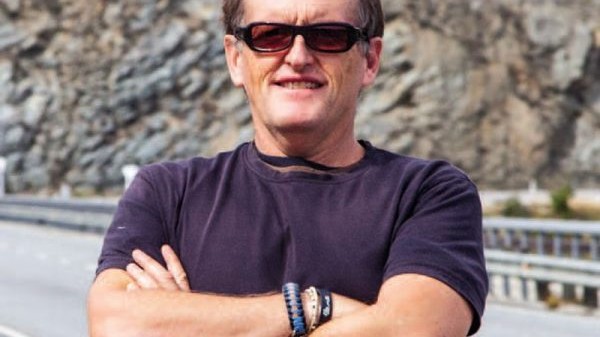
First, we have the good news – no, the great and heart-warming news. I’ve been on leave the past couple of weeks in the big red, hot, ‘west’ island, and so missed the wonderful truck ride event for Ollie Johnson in Hamilton last Sunday. Gav wrote about it in last Friday’s EDM, but I also had to say something. Once again, the Hart family stepped up for someone in need, and once again, the industry represented itself magnificently, as only it can.
If I’ve said it once, I’ve said it a thousand times, and it will likely be one of the last things I say before being poked into the oven – my most important mentors came from and continue to come from inside the cabs of trucks. Honest, hardworking folk, incredibly time-poor, yet generous to a fault. To all involved – it was a fantastic effort, and you’ve done us proud.
On to more sobering things; over the past couple of weeks, the shocking realisation of how appalling New Zealand’s roading infrastructure is has hit home. Likewise, just how apathetic we are about it, as a nation and an industry.
I’ve been amazed by three things travelling across the central-eastern and northern expanses of Australia. First, the quality of the roads. Second, many of the locals we’ve yarned to believe them to be buggered. The third is roadworks, and the Australians’ approach to this daily phenomenon, currently experiencing a deep case of chaos theory at home.
On the first point, the roads we have driven on are so far ahead of ours in quality that it’s embarrassing. Yes, there are a couple of stretches on the Barkly Highway, west of the Queensland/Northern Territory border, which got a bit lumpy, and the Stuart Highway at Barrow Creek had about 1km of pot-holed surface you had to take care on. The rest have appeared fast and smooth. Keep in mind that the Northern Territory is about five times the size of New Zealand, and the area of our meanderings in Queensland is about the size of the North Island – the point being we covered a fair bit. On point two, all I can say to the locals is, ‘If you want to see buggered roads, visit us.’ Mind you, if I had longer to discuss the issues, I would caution them to keep on top of it if they sense a decline and not simply ignore it as we have.
Then there are the truck facilities in the Territory – huge slip-off areas with three or four lanes accommodating two road trains in length, some with toilets and all with rubbish bins. There’s not a single piece of money-consuming extraneous art attached to any of them, taking up resources that could have gone into the core facility. There are simply practical and safe facilities for drivers to have an hour in the bunk or safely check their loads. As observed on previous visits, most are named after famous truck drivers. The Northern Territory administrators know who delivers their ability to survive… literally… and acknowledge that.
The third most noticeable thing is roadworks. The backdrop to this point is a 130km/h open-road speed for cars in the Territory and road trains running up and down the road at 53.5m long and 140 tonne. And don’t for one minute think the main arterials of the Outback are empty. You’ve not seen caravans or campers in any number until you’ve been to the Outback. They almost go one-for-one with the ant hills.
Each set of roadworks we encountered had a couple of large, clear approach signs and probably 40 to 50 cones. In other words, they stood out and didn’t just blend into a sea of orange. There were no attenuator-vehicles-for-Africa or people sitting in utes aimlessly waving flags. They seemed well-organised, and instructions were few but well-communicated. They obviously work on a less-is-more theory of controlling the scene rather than the sensory-overload model Kiwis adopt. On one construction site along the Stuart Highway, the ‘random ute person’ was used to chaperone the traffic at the required speed once the ‘Go’ sign had appeared – something I thought was a great idea. When they got to the end, they turned around and led the next lot through the other way. Given Kiwis’ supreme arrogance when it comes to any form of behind-the-wheel behaviour, I thought that would be something we could apply here. It also took the need for personal responsibility away, something that’s almost a core part of the New Zealand psyche in 2023. It fits our culture well, plus it’s a far more practical and safety-oriented use of roadworkers than merely sitting half-asleep waving a flag out the window.
I don’t know, maybe in Australia you also get slammed if you make an arse of yourself in a set of roadworks so the punters are generally better behaved? Something’s certainly different in culture on both sides of the Stop/Go signs.
Australia is not New Zealand – I get that. Yes, substrates, available land, traffic patterns, blah, bah. But merely observing the network and the approach taken in one of the planet’s most remote and arduous environments made me embarrassed for my own country. Modern Western nations can only survive with trucks and an efficient roading network for them to run on.
Treating trucks and roads with the contempt, disdain, and flat-out ignorance shown by the government in New Zealand today will only weaken our opportunities, standard of living and relevance in the world.
All the best
Dave McCoid
Editorial Director
Read more
Protest if you must
2 Comments5 Minutes
A watched kettle…
0 Comments6 Minutes
Same old same old
0 Comments5 Minutes



